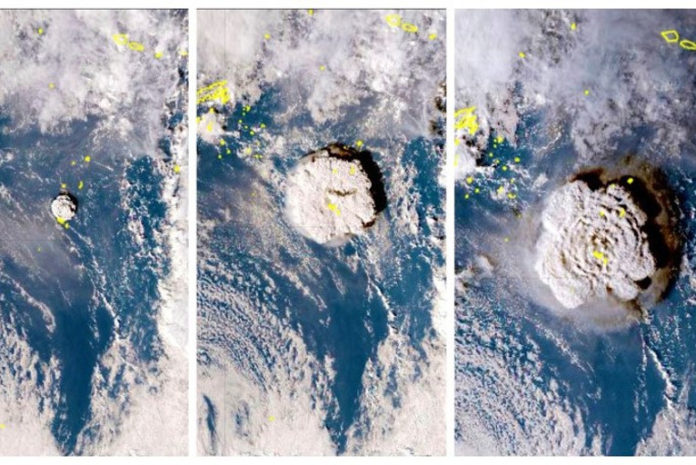According to information released by the National Weather Service, in addition to a tsunami affecting coastlines Saturday, a pressure wave from the major volcanic eruption in the South Pacific moved from west to east through Southern Oregon Saturday morning. This pressure wave was detected by observations, and was measured to have had a rough speed of 765 miles per hour, approximately the speed of sound.
The Hunga Tonga undersea volcanic eruption was the largest on earth over the last 30 years, according to the National Weather Service, reporting that the pressure wave observed on the southern Oregon coast, traveled from Brookings, to Lakeview, Oregon, approximately 130 miles, in just 10 minutes.
Since seismic activity was not related to the tsunami that resulted from the eruption some 40 miles north of the main island of Tonga, researchers at the National Weather Service concluded that the tsunami was generated by the pressure wave itself, with some of the tsunami surges reaching as far as Alaska.
Researchers for the the National Weather Service stationed in Alaska reported that the pressure wave arrived in Alaska at around 3:30am on Saturday, but a second wave was felt around 11:00pm that same night. Researchers went on to compare the eruption to the Krakatoa eruption recorded in 1883, which caused a pressure wave that made three and a half trips around the globe and was felt seven times, however, the Tonga eruption was equivalent of only 2% of the pressure released in the Krakatoa eruption.


















